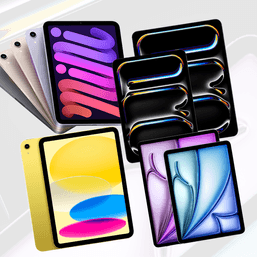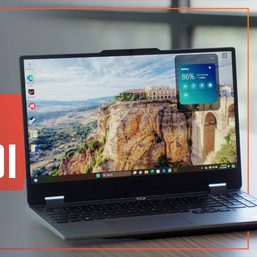SUMMARY
This is AI generated summarization, which may have errors. For context, always refer to the full article.

Disclosure: Honor lent a unit for this review.
With last year’s Magic5 Pro and this year’s Magic V2, Honor has been making a strong case for why it deserves to be considered among the top premium smartphone brands in the market today – next to Samsung and Apple. That case is made even stronger with the release of the Magic6 Pro, a new flagship that packs some of the best hardware money can buy.
What I love so much about it is that it’s impressive where it truly counts – battery life, display, and camera system. To me, it very much feels like Honor opted for a back-to-basics approach in its development, prioritizing usability and focusing on the essentials, not superficial gimmicks or novelty features.
It’s a great all-around smartphone that can more than hold its own against similarly priced competitors like Samsung’s Galaxy S24 and Apple’s iPhone 15.
Silicon-carbon battery

The standout feature for me is the Magic6 Pro’s incredible battery life. You see, instead of the regular lithium-ion cell found in most smartphones today, Honor’s flagship is powered by a silicon-carbon cell, enabling it to have a higher energy density than others of its size. That means you’re getting more power for less space.
From what I know, Honor is currently the only one in the smartphone industry implementing this next-generation battery solution into its products, so that’s a big win for the brand.
I’ve had the Magic6 Pro for close to a month now, and it perhaps takes the crown of being the longest-lasting smartphone I’ve ever reviewed.
I put the device’s battery through its paces on a daily basis, from hotspotting 5G connections to playing hours upon hours of high-definition YouTube videos, and was always left surprised at the end of the day to find that I’ve only drained about 40%-50% of the total capacity.
You can throw just about any task at it during the day – gaming included – and still have enough power to stream a movie or browse social media while you’re in bed at night. On moderate usage, I’d even go as far as to say that it can last at least two full days on a single charge.
The Magic6 Pro supports wired charging at up to 80W and wireless at up to 66W. Wired charging from empty with the 100W SuperCharge brick that comes in the package takes about an hour and five minutes, which is fairly good. It’s not the fastest out there, but I don’t think that should matter too much when you’re getting more than a day’s worth of use on a single charge.
Equally excellent is the display, a 6.8-inch OLED panel with an adaptive 120Hz refresh rate. It’s slightly larger than the iPhone 15 Pro Max’s display and about the same size as the S24 Ultra’s, which means you’re getting a whole lot of viewing real estate here. The panel being OLED also means you’re getting vibrant and rich colors with decent viewing angles. On top of that, it can get very bright and reach up to 5,000 nits for HDR content.
Also worth mentioning is that the display is curved, where the corners are rounded and the vertical edges look like they’re spilling over the sides. Personally, the type of display – flat- or curved-edged – doesn’t affect my viewing experience much, but I know some prefer one over the other. If anything, a lot of today’s flagships have flat-edged displays, which makes the display here all the more unique.
Formerly the DxOMark camera king
Now, onto what you’re probably interested in the Magic6 Pro in the first place, the cameras – which held the top spot in the overall camera category in DxOMark before getting dethroned by the Huawei Pura 70 Ultra.
In case you’re not familiar, DxOMark is a ratings website that evaluates the imaging capabilities of smartphones through a series of scientific tests, and awards them numeric ratings based on their performance from those tests. The Magic6 Pro’s cameras earned a score of 158, beating previous leaders the Huawei Mate 60 Pro+ and the OPPO Find X7 Ultra which both scored 157.
But recently just this May, the Huawei Pura 70 Ultra came out with a score of 163.
So are the cameras indeed deserving of such acclaim? Yes, very much so, but they’re not without a few minor issues.
The Magic6 Pro comes equipped with what Honor calls a Falcon Camera System that consists of a 50MP wide lens, a 50MP ultra-wide lens, and a 180MP periscope-telephoto lens.
Let’s first take a look at the 50MP wide lens – the primary lens – which I think is the most interesting, with a sample image shown below. It has a variable aperture that switches between the default opening of f/2.0 and a wider f/1.4 for low-light situations. That’s made possible thanks to a mechanical shutter that opens wider or closes smaller depending on the setting. You can switch between the two settings manually in Pro mode.

While the aperture difference is not significant, having the feature definitely gives the lens a bit more versatility, helping macro and low-light shoots look more natural. The lens can capture details exceptionally well, though sometimes color contrast and saturation can be somewhat off for my personal tastes. But overall, it’s impressive and, in my opinion, is capable of giving its Galaxy S24 Ultra and iPhone 15 Pro counterparts a run for their money.
There’s also an AI-powered motion-sensing mode for sports photography that can lessen motion blur and sharpen subjects in the middle of action. I tried the mode in a fencing exhibition during an Honor-sponsored trip to China, and I observed that the AI is indeed very good at sensing motion.
Once it does, it can automatically snap photos for you, but the results are rarely satisfactory. You’re still better off having your finger on the shutter as much as possible, which means the feature is not one-hundred percent foolproof. Still, it does work as advertised, so I can’t complain too much.
The 50MP ultra-wide lens is great as well, which is another big win. A sample image is shown below. Some camera systems tend to suffer from color and dynamic range inconsistencies between the ultra-wide lens and the primary lens. That’s not the case here.

Finally, the 180MP periscope-telephoto lens is, well, kind of a mixed bag. You get a 2.5X optical zoom and up to 100X digital zoom with it. I was able to get some wonderful photos at up to 10x zoom with decent amount of detail, given that there’s enough light. Here’s a sample image:

Anything beyond that territory though, details start becoming soft with visible artifacts, which isn’t good. Despite these issues, I think the Magic6 Pro has one of the better implementations of a smartphone zoom lens in a long while.
You might just have to level your expectations with its zoom capabilities.
iOS-like software
There’s perhaps only one thing I didn’t like so much about the Magic6 Pro, and it’s Honor’s MagicOS software. The version that comes out of the box, MagicOS 8, is built on Android 14, but you’d be forgiven to think it was running iOS at first glance.
The overall look and aesthetic sort of apes the iPhone’s software. Some functionalities are even very similar like how Honor has its own version of Apple’s Dynamic Island which it calls Magic Capsule.
I don’t think the software is a dealbreaker, but it did throw me off at first. It also felt a bit weird to be using an Android device with iOS-like interfaces, animations, and functions – almost as though you’re using a PlayStation controller on, say, an Xbox. Then again, those coming from an iPhone might appreciate the “familiarity”.
All in all, I think the Magic6 Pro is a tremendous flagship. The resilient battery, together with the gorgeous display and the top-notch camera system, make it one of the best all-around smartphones in the market today.
Plus, the inclusion of a flagship-level Snapdragon 8 Gen 3 chipset with 12GB of RAM and 512GB of storage help justify the P59,999 price tag. There’s enough performance power here to put it in the same conversation with other premium releases like the previously mentioned S24 Ultra and the iPhone 15 Pro and Pro Max. Spec-for-spec, however, the Magic6 Pro has an arguably better value proposition. – Rappler.com
Add a comment
How does this make you feel?




There are no comments yet. Add your comment to start the conversation.